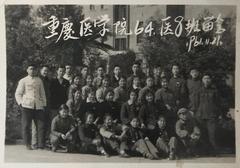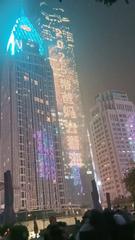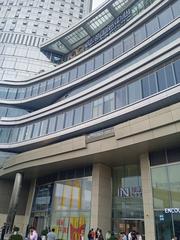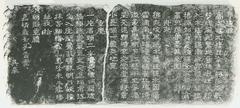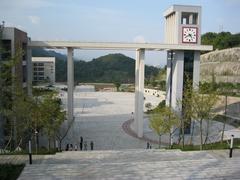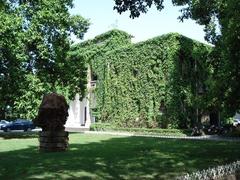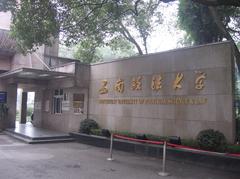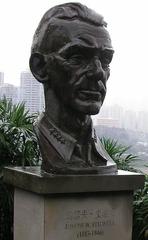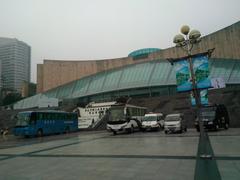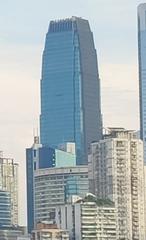Diaoyu Fortress Visiting Hours, Tickets, and Guide to Chongqing Historical Sites
Date: 14/06/2025
Introduction
Diaoyu Fortress (Diaoyucheng), located in Hechuan District, Chongqing, is a legendary historical site epitomizing Chinese resilience, innovation, and patriotism. Rising atop Diaoyu Mountain at the confluence of the Jialing, Fu, and Qu rivers, the fortress was constructed during the Southern Song Dynasty and is best known for its extraordinary defense against the Mongol Empire’s invasion. The 36-year siege and the death of Mongol leader Möngke Khan at its gates marked a decisive moment in Chinese history, preserving the Song Dynasty and immortalizing Diaoyu Fortress as a symbol of unwavering defense.
Today, Diaoyu Fortress offers visitors an immersive journey through history, with well-preserved fortifications, ancient temples, Song Dynasty marketplaces, and panoramic natural vistas. This guide provides detailed information on visiting hours, ticketing, transportation, key attractions, and practical travel tips, ensuring a rewarding experience for history enthusiasts, families, and cultural explorers alike (The Brain Chamber; Chongqing Deep Tour; Wikipedia - Diaoyucheng).
Table of Contents
- Introduction
- Historical Background and Cultural Significance
- Visiting Information (Hours, Tickets, Accessibility)
- Getting There (Transportation Options)
- Main Attractions and Experiences
- Guided Tours and Special Events
- Nearby Sites and Local Cuisine
- Visitor Tips and Best Times to Visit
- Frequently Asked Questions (FAQ)
- Visual Gallery
- References
Historical Background and Cultural Significance
Diaoyu Fortress was founded in the early 12th century under local commander Yu Jian. Its strategic position atop imposing cliffs and surrounded by rivers rendered it a nearly impregnable stronghold. During the 13th century, the fortress gained fame for its 36-year resistance against the Mongol Empire, led by prominent defenders and culminating in the death of Möngke Khan in 1259. This event ensured the survival of the Southern Song Dynasty and established Diaoyu Fortress as an enduring emblem of Chinese military ingenuity and national pride (People.cn; ScienceDirect).
The fortress continues to inspire through annual festivals, cultural performances, and preservation efforts, reflecting its deep-rooted significance in Chinese heritage.
Visiting Information
Visiting Hours
- April to October: 8:00 AM – 6:00 PM
- November to March: 8:30 AM – 5:00 PM
- Note: Hours may vary during public holidays or special events. Confirm before your visit.
Tickets
- Adults: 60–80 RMB
- Students/Seniors: 30–40 RMB (with valid ID)
- Children under 1.2 meters: Free
- Group discounts: Available for parties of 20 or more; inquire in advance
Accessibility
- Paved paths and designated shuttle buses reduce the need for strenuous climbing, but some steep sections remain. Wheelchair access is limited to certain areas. Comfortable shoes are recommended.
Facilities
- Visitor Center: Information desk, restrooms, souvenir shops, and first aid.
- Food & Refreshments: Snack stalls and small restaurants near the entrance and Song Street.
- Language: Bilingual signage (Chinese/English); English-speaking guides available with advance booking.
Getting There
Diaoyu Fortress is 68–80 kilometers from central Chongqing and accessible by:
- Public Transport: From major districts (Shapingba, Caiyuanba, Longtousi, Nanping, Chenjiapu), take a bus to Hechuan District, then transfer to Bus 111 or He 1929 to reach the site (Chinatripedia).
- By Train: Trains operate from Chongqing North Station to Hechuan Railway Station, followed by a taxi or local bus.
- By Car: Approximately 1.5 hours via G93 or Yu Wu Expressway; parking is available near the entrance.
- Private Transfer: Available from Chongqing hotels.
- River Access: Some tours offer scenic boat trips along the Jialing River (Islamic China Travel; Chongqing Deep Tour).
Main Attractions and Experiences
Song Street and Marketplace
Stroll through Song Street, a reconstructed ancient avenue bustling with vendors in period attire, offering local snacks, crafts, and performances. This immersive area recreates the vibrant atmosphere of the Song Dynasty marketplace (Chongqing Deep Tour).
Defensive Structures
- Huguo Gate: The main fortress gate, protected by cliffs and the Jialing River, features an iconic two-story pavilion.
- City Walls and Watchtowers: Explore extensive walls, climb watchtowers like Huangguan Ting for sweeping views, and discover hidden tunnels and defensive traps (History Hit; History Tools).
Temples and Shrines
- Huguo Temple: Founded in 1155, this temple is famed for its ancient osmanthus tree and tranquil courtyards.
- Zhongyi Shrine: Honors the fortress’s defenders and features Ming–Qing architecture and commemorative tablets.
- Suspended Reclining Buddha and Qianfo Grottoes: Unique cliffside Buddha statues and ancient cave carvings (Easy Tour China).
Battlefield Relics
Discover barracks, naval docks, and military yamen, along with educational signage detailing the fortress’s storied past. Some temples double as museums, displaying relics and stone carvings (History Hit).
Scenic Views
The fortress’s elevation affords panoramic views over the river valleys and surrounding countryside, making it an exceptional site for photography at sunrise or sunset.
Guided Tours and Special Events
- Guided Tours: Available daily in Mandarin and limited English; booking in advance is advised.
- Annual Cultural Festivals: Reenactments, music, dance, and craft fairs held in late August commemorate the Mongol siege and celebrate local heritage.
- Interactive Experiences: Some periods offer digital projections, VR exhibits, and ancient Chinese games (cuju, archery, pitch-pot) for visitors (ScienceDirect).
Nearby Attractions and Local Cuisine
- Hechuan Old Town: Explore centuries-old streets, architecture, and vibrant local markets.
- Wu River Scenic Area: Enjoy boat rides and riverside walks.
- Local Specialties: Sample spicy river fish, sesame cakes, and Chongqing-style noodles on Song Street or in Hechuan’s restaurants (Chongqing Deep Tour).
Visitor Tips and Best Times to Visit
- Best Time: April to June and September to November offer the most pleasant weather and fewer crowds (Islamic China Travel).
- Clothing: Wear comfortable shoes; bring water, sun protection, and a light jacket in cooler months.
- Language: Basic Mandarin or a translation app is useful; most staff speak only Chinese.
- Payment: Mobile payments (WeChat Pay, Alipay) are widely accepted, but carry some cash.
- Safety: Supervise children, especially on steep or slippery paths; drones may be restricted.
Frequently Asked Questions (FAQ)
Q: What are the visiting hours?
A: 8:00 AM–6:00 PM (Apr–Oct); 8:30 AM–5:00 PM (Nov–Mar).
Q: How much are tickets?
A: 60–80 RMB for adults; discounts for students, seniors, and children.
Q: Is the fortress wheelchair accessible?
A: Some areas are accessible; shuttle buses help reduce walking, but steep terrain remains.
Q: Are guided tours available in English?
A: Limited English tours; arranging in advance through agencies is recommended.
Q: When is the best time to visit?
A: Spring and autumn for mild weather and lush scenery.
Visual Gallery
References
- The Brain Chamber: Diaoyu Fortress
- People.cn: Historical Significance of Diaoyu Fortress
- ScienceDirect: Archaeological Studies on Diaoyu Fortress
- Chongqing Deep Tour: Guide to Diaoyu Fortress
- Wikipedia - Diaoyucheng
- Islamic China Travel: Diaoyu Fortress Attraction Guide
- HelloTravel: Diaoyu Fortress
- History Hit: Diaoyu Fortress
- History Tools: Diaoyu Fortress Story
- Easy Tour China: Diaoyu Fortress
- Chinatripedia: Diaoyu Fortress Ticket & Travel Info
Plan Your Visit
Diaoyu Fortress stands as a living testament to China’s enduring spirit and cultural legacy. With its captivating blend of historic architecture, scenic beauty, and interactive experiences, it is an essential destination for anyone exploring Chongqing. For the latest updates, event schedules, and travel tips, download the Audiala app or visit official tourism resources. Embark on your journey and witness where history and nature converge!

